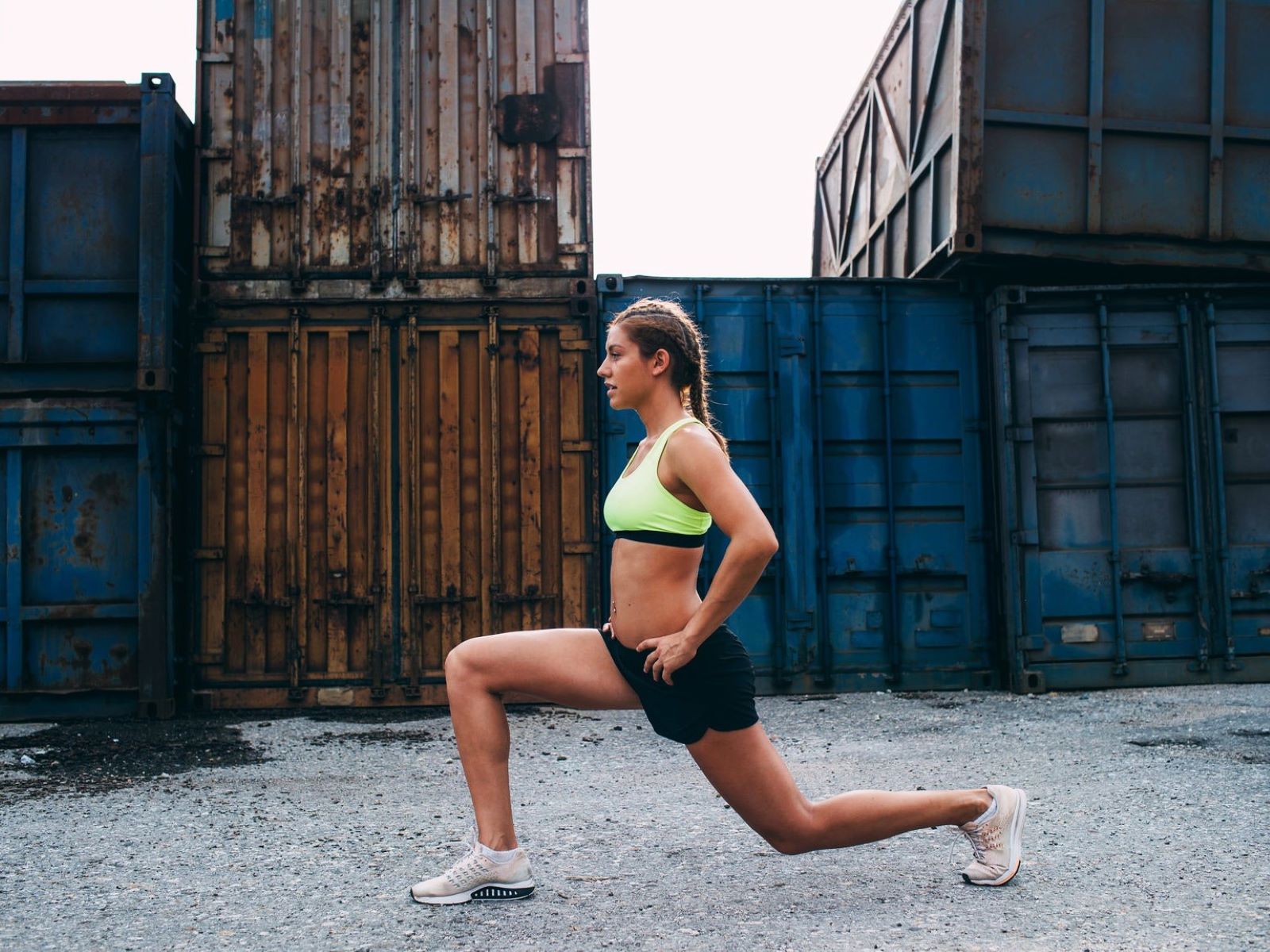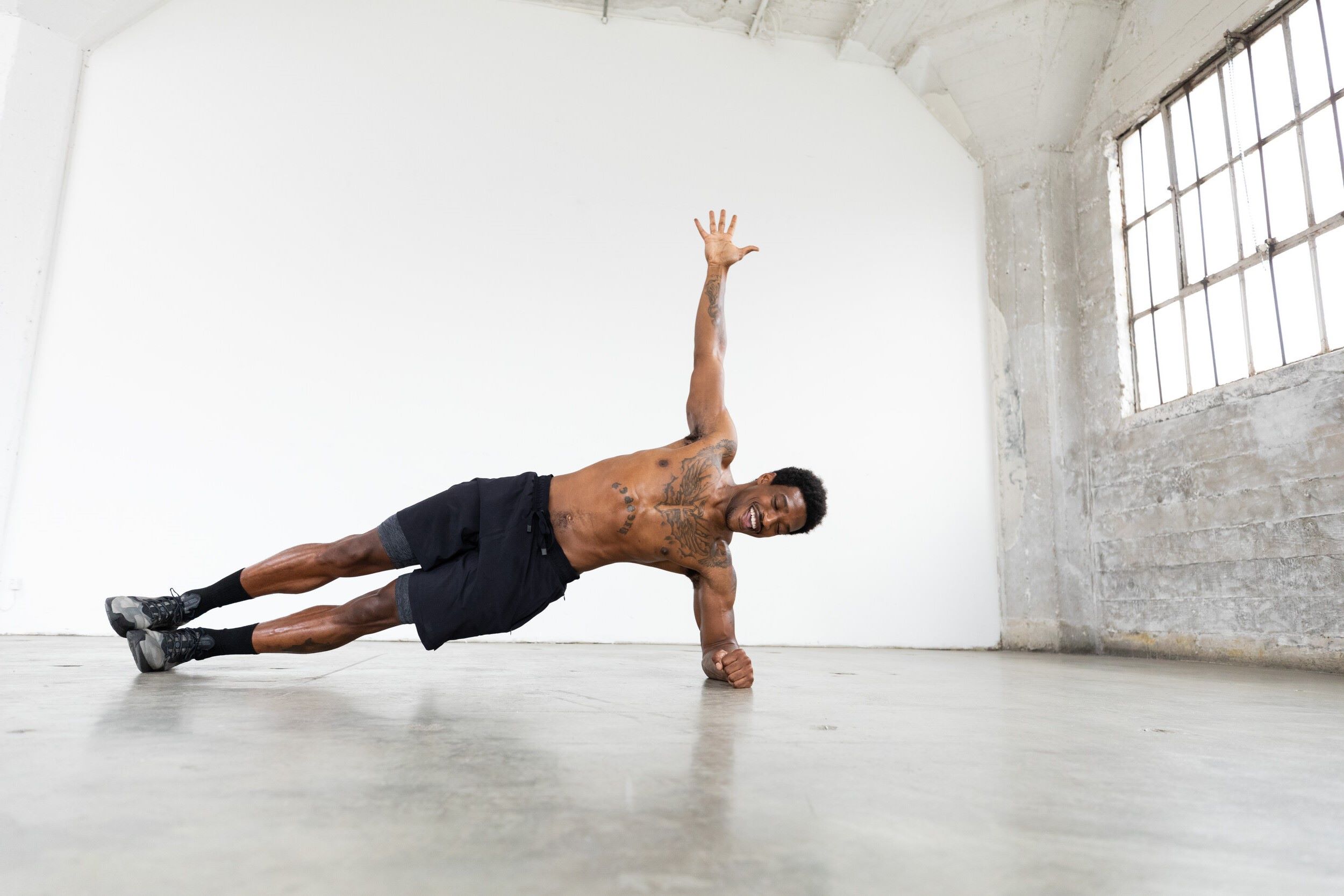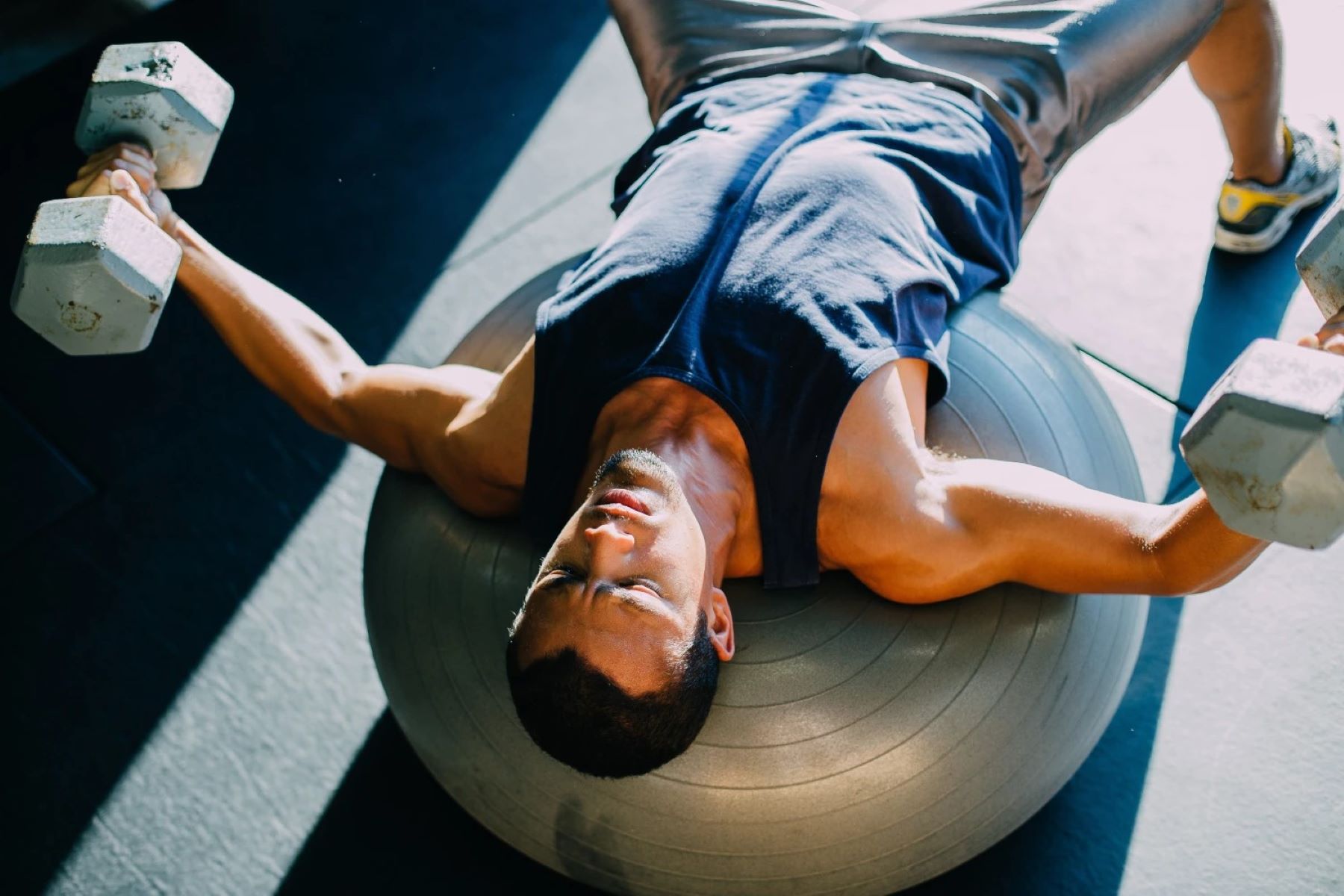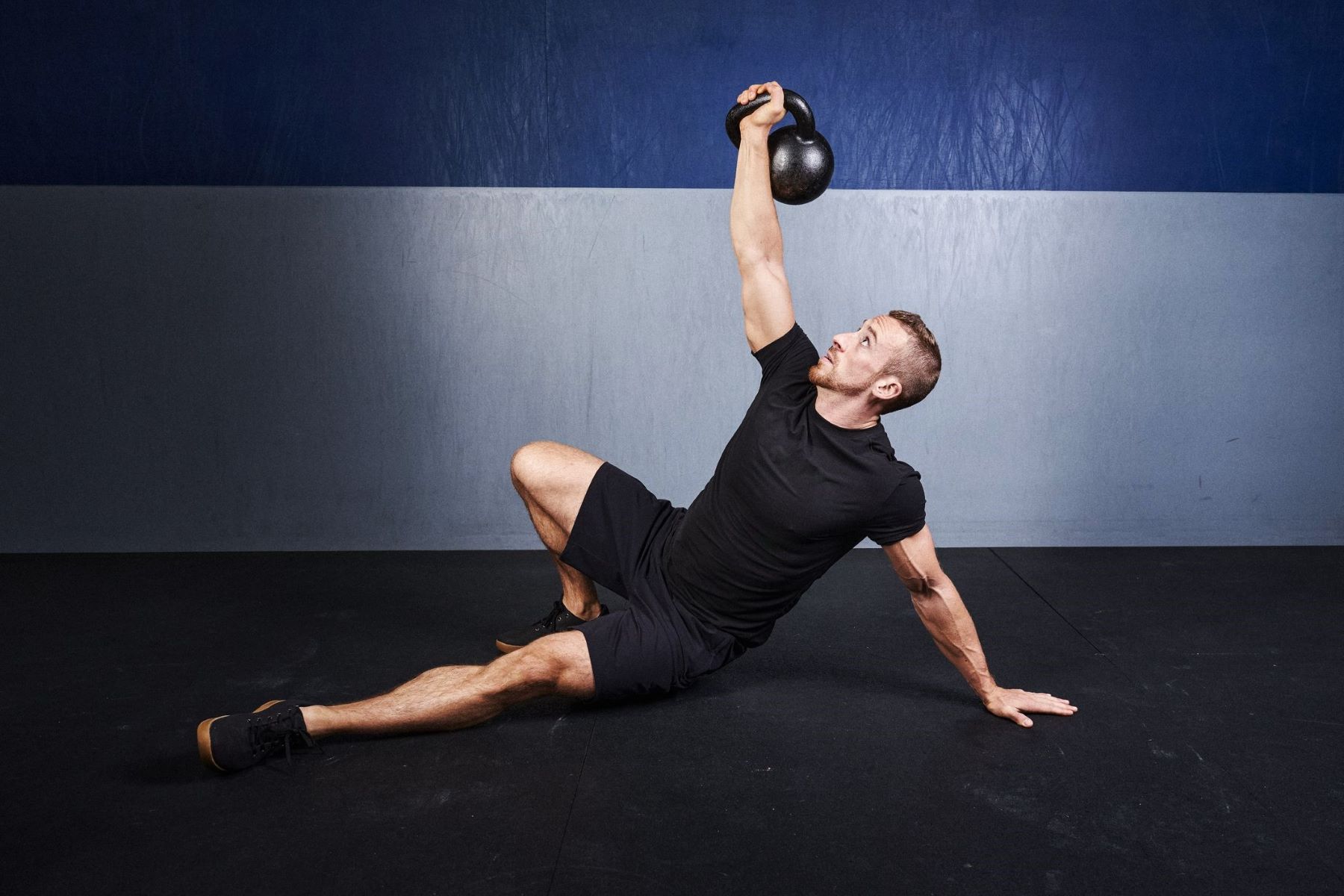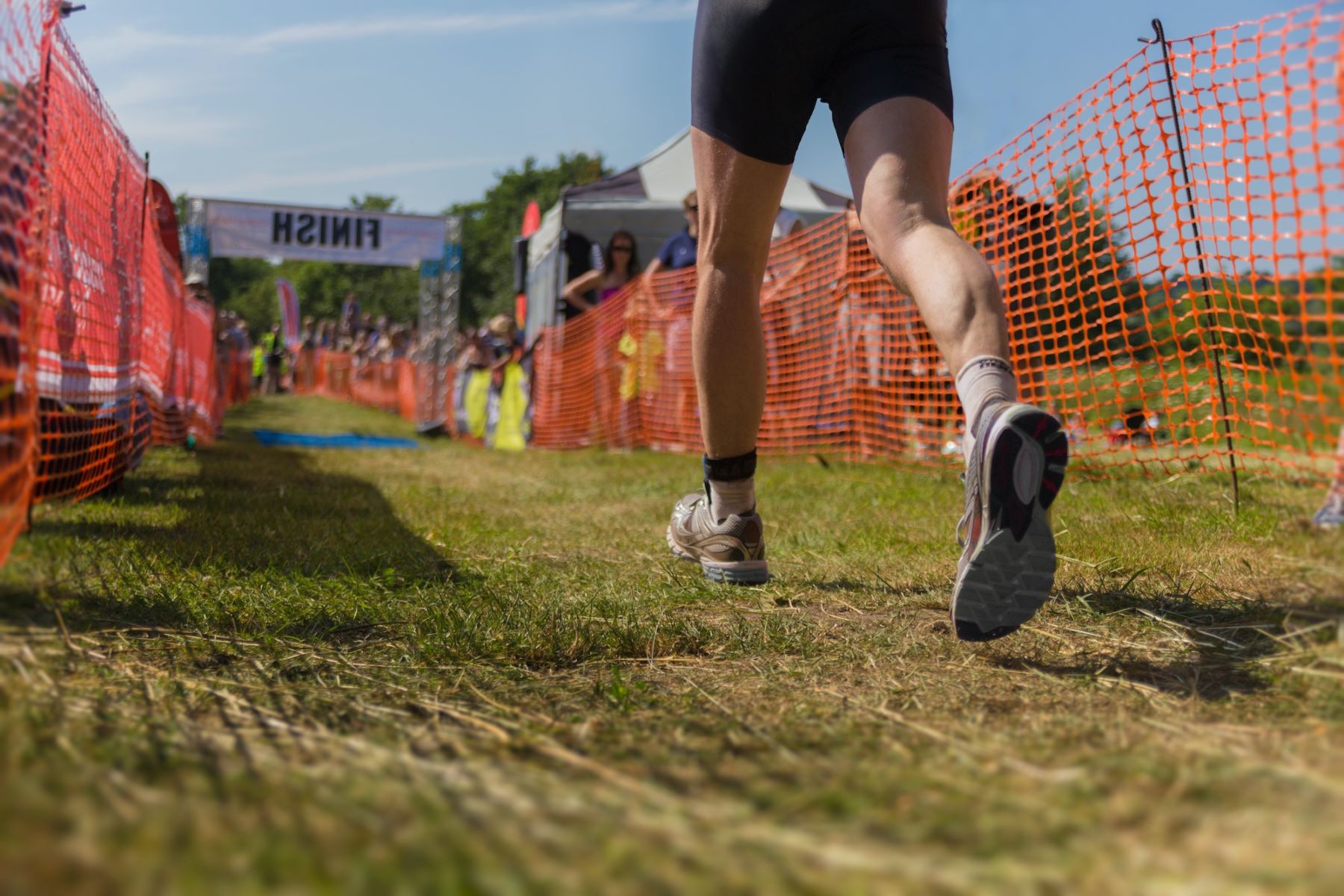Home>Training & Techniques>The Benefits And Techniques Of Incorporating Side Lunges Into Your Strength Training
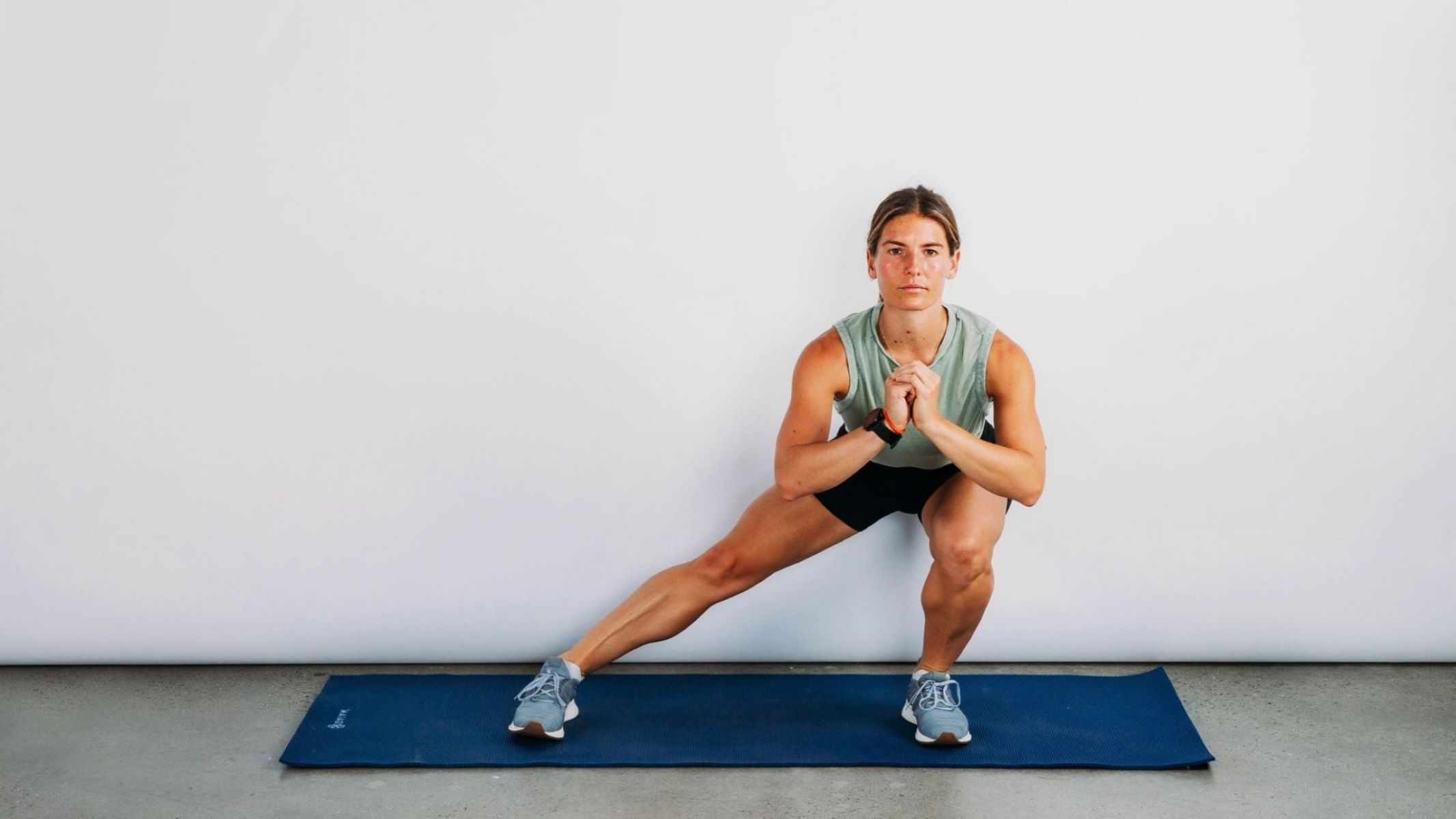

Training & Techniques
The Benefits And Techniques Of Incorporating Side Lunges Into Your Strength Training
Published: March 4, 2024
Discover the benefits and techniques of incorporating side lunges into your strength training routine. Learn how to optimize your training & techniques for maximum results.
(Many of the links in this article redirect to a specific reviewed product. Your purchase of these products through affiliate links helps to generate commission for Therunningadvisor.com, at no extra cost. Learn more)
Table of Contents
Introduction
Strength training is a crucial component of any fitness regimen, and incorporating a variety of exercises can significantly enhance its effectiveness. One such exercise that deserves attention is the side lunge. This dynamic movement not only targets multiple muscle groups but also offers a range of benefits that can elevate your strength training routine to new heights.
In this comprehensive guide, we will delve into the intricacies of side lunges, exploring the muscles they engage, the advantages they offer, proper form and technique, variations and modifications, as well as a sample workout routine. Whether you're a seasoned fitness enthusiast or just beginning your journey toward a stronger, fitter self, understanding the nuances of side lunges can empower you to optimize your strength training regimen.
By gaining insight into the mechanics of this exercise and its impact on the body, you can harness its potential to sculpt and strengthen key muscle groups. Moreover, by mastering the proper form and technique, you can maximize the benefits of side lunges while minimizing the risk of injury. Additionally, exploring variations and modifications will enable you to tailor this exercise to your specific fitness level and goals, ensuring that it remains challenging and effective.
As we embark on this exploration of side lunges, it's important to approach this exercise with an open mind and a willingness to embrace new challenges. Whether you're aiming to build lower body strength, improve balance and stability, or simply diversify your workout routine, side lunges have the potential to become a valuable addition to your fitness arsenal. So, let's dive into the world of side lunges and unlock their transformative power within your strength training journey.
Understanding the Muscles Targeted in Side Lunges
Side lunges are a highly effective exercise that engages a multitude of muscles, making them a valuable addition to any strength training routine. Understanding the specific muscles targeted during side lunges can provide insight into the comprehensive benefits they offer.
Quadriceps
The quadriceps, located at the front of the thigh, are actively engaged during side lunges. As you lower your body to one side, the quadriceps work to stabilize the knee and support the movement, effectively strengthening and toning these crucial muscles.
Hamstrings
The hamstrings, situated at the back of the thigh, play a pivotal role in the execution of side lunges. As you push your body back to the starting position, the hamstrings contract to facilitate this movement, contributing to improved strength and flexibility in this muscle group.
Gluteal Muscles
Side lunges effectively target the gluteal muscles, including the gluteus maximus, medius, and minimus. These muscles are responsible for hip extension and abduction, both of which are integral movements during side lunges. Strengthening the gluteal muscles can enhance overall lower body strength and stability.
Adductors
The adductor muscles, located on the inner thigh, are engaged as you push off to return to the starting position during side lunges. This movement recruits the adductors to stabilize the body and facilitate the lateral motion, contributing to improved muscle tone and functional strength in this area.
Core Muscles
The core muscles, including the abdominals and obliques, play a supportive role during side lunges. They help stabilize the torso and maintain proper posture throughout the exercise, promoting overall core strength and stability.
Hip Flexors
The hip flexors, comprising muscles such as the iliopsoas and rectus femoris, are involved in the initial lowering phase of side lunges. This engagement contributes to improved flexibility and strength in the hip flexor region, which is essential for various daily movements and athletic activities.
By comprehensively engaging these key muscle groups, side lunges offer a holistic approach to lower body strengthening and conditioning. Understanding the intricate involvement of these muscles underscores the significance of incorporating side lunges into your strength training routine to achieve balanced muscular development and functional fitness.
Benefits of Incorporating Side Lunges into Your Strength Training
Incorporating side lunges into your strength training regimen offers a myriad of benefits that extend beyond mere muscle development. These dynamic movements have the potential to elevate your fitness journey and contribute to overall physical well-being. Here are the key advantages of integrating side lunges into your strength training routine:
-
Enhanced Lower Body Strength: Side lunges target the quadriceps, hamstrings, gluteal muscles, adductors, and hip flexors, effectively strengthening these muscle groups. This comprehensive engagement fosters balanced lower body development, improving overall strength and stability.
-
Improved Functional Movement: The lateral motion of side lunges mimics real-life movements such as stepping sideways or getting in and out of a car. By replicating these functional movements, side lunges contribute to enhanced mobility and agility in daily activities.
-
Enhanced Hip Flexibility: The dynamic nature of side lunges requires significant hip mobility, leading to improved flexibility in the hip flexor region. This increased flexibility can alleviate tightness and discomfort while promoting better range of motion in the hips.
-
Core Stabilization: Side lunges engage the core muscles to maintain stability and proper posture throughout the exercise. This continual activation of the core promotes enhanced core strength and stability, which is essential for overall functional fitness.
-
Balance and Coordination: Performing side lunges challenges your balance and coordination, especially when transitioning from one side to the other. Over time, this can lead to improved balance and coordination, which are vital for various physical activities and reducing the risk of falls.
-
Calorie Burning and Fat Loss: The dynamic nature of side lunges, coupled with the engagement of multiple muscle groups, elevates heart rate and promotes calorie burning. When incorporated into a comprehensive strength training routine, side lunges can contribute to fat loss and improved body composition.
-
Injury Prevention: Strengthening the muscles involved in side lunges, such as the quadriceps, hamstrings, and gluteal muscles, can contribute to improved joint stability and reduced risk of injury during physical activities and daily movements.
-
Versatility and Adaptability: Side lunges can be modified and adapted to suit various fitness levels and goals. Whether you're a beginner or an experienced athlete, the versatility of side lunges allows for customization, ensuring that they remain challenging and effective.
By embracing the benefits of side lunges, you can elevate your strength training routine, promote balanced muscular development, and enhance overall physical performance. Incorporating these dynamic movements into your fitness regimen can lead to a more robust and functional body, setting the stage for a holistic approach to strength and conditioning.
Read more: Mastering The Technique Of Jumping Lunges
Proper Form and Technique for Side Lunges
Executing side lunges with proper form and technique is essential to maximize their effectiveness and minimize the risk of injury. By adhering to the following guidelines, you can ensure that you derive the full benefits of this exercise while maintaining safety and stability throughout the movement.
-
Starting Position: Begin by standing tall with your feet hip-width apart and your hands positioned comfortably at your sides. Engage your core muscles to maintain stability and proper posture.
-
Lateral Step: Take a wide lateral step to one side, ensuring that your toes are pointed forward and your feet remain parallel to each other. As you step, shift your body weight onto the lead leg while keeping the opposite leg straight and the foot flat on the ground.
-
Hip Hinge and Knee Flexion: Initiate the movement by hinging at the hips, pushing your hips back as you bend the lead leg, ensuring that the knee aligns with the toes and does not extend beyond them. Simultaneously, the opposite leg remains straight, with the foot firmly planted on the ground.
-
Depth of Lunge: Lower your body until the lead thigh is parallel to the ground, maintaining a controlled and stable descent. It's important to avoid excessive forward lean or inward collapse of the knee, as this can place undue stress on the joints.
-
Pushing Back: Push through the lead heel to return to the starting position, extending the lead leg and bringing the trailing leg back to the initial stance. Ensure that the movement is executed smoothly and with controlled momentum.
-
Repeating on the Opposite Side: Perform the same sequence of movements on the opposite side, ensuring that the execution is symmetrical and balanced.
Key Points to Remember:
- Maintain an upright torso throughout the movement, avoiding excessive forward lean or rounding of the back.
- Keep the lead knee aligned with the toes and tracking in the same direction to prevent unnecessary strain on the knee joint.
- Engage the gluteal muscles of the lead leg as you push back to the starting position, emphasizing the hip extension for optimal muscle activation.
- Focus on controlled breathing, inhaling as you lower into the lunge and exhaling as you push back to the starting position.
By adhering to these fundamental principles of proper form and technique, you can perform side lunges effectively and safely. It's important to start with a conservative range of motion and gradually increase the depth of the lunge as flexibility and strength improve. Additionally, maintaining mindfulness of body alignment and muscle engagement will contribute to the overall efficacy of this exercise, leading to enhanced lower body strength, flexibility, and functional movement patterns.
Variations and Modifications for Side Lunges
Variations and modifications for side lunges offer a versatile approach to cater to diverse fitness levels, goals, and individual needs. By incorporating these adaptations, you can customize the exercise to align with your current abilities and progress steadily toward more challenging variations. Here are several variations and modifications to consider when integrating side lunges into your strength training routine:
1. Weighted Side Lunges
Integrating additional resistance, such as dumbbells or kettlebells, can elevate the intensity of side lunges. Holding weights at your sides or using a weighted vest while performing side lunges increases the demand on the lower body muscles, promoting greater strength and muscle development.
2. Pulse Lunges
Adding a pulsing motion at the lowest point of the lunge intensifies the muscular engagement and enhances the challenge. After descending into the lunge position, perform small, controlled pulses by slightly moving up and down within the range of motion before returning to the starting position. This modification amplifies the burn in the targeted muscles, contributing to enhanced muscular endurance.
3. Lateral Lunge to Curtsy Lunge
Combining the lateral lunge with a curtsy lunge creates a dynamic movement that targets a wider range of muscles. Start with a side lunge and then transition into a curtsy lunge by crossing the trailing leg behind the lead leg, engaging the glutes and inner thighs to a greater extent. This variation adds complexity to the exercise, challenging stability and coordination while sculpting the lower body.
4. Elevated Side Lunges
Performing side lunges with the lead foot elevated on a step or platform increases the range of motion and intensifies the stretch on the adductors and hip flexors. This variation enhances flexibility and requires greater strength and balance, making it an advanced modification suitable for those seeking a more demanding workout.
5. Slider Side Lunges
Using sliders or a smooth surface to facilitate lateral movement adds an element of instability, engaging stabilizing muscles and enhancing core strength. By sliding the lead foot out to the side and then back to the starting position, you create a challenging variation that demands greater control and coordination, contributing to improved balance and functional strength.
6. Resistance Band Side Lunges
Incorporating resistance bands around the thighs or ankles adds external resistance, intensifying the lateral leg movement and engaging the hip abductors to a greater degree. This modification not only strengthens the targeted muscles but also enhances hip stability and alignment, making it beneficial for injury prevention and rehabilitation.
By incorporating these variations and modifications, you can tailor side lunges to align with your fitness objectives and continually challenge your body. Whether you're aiming to increase strength, improve flexibility, or enhance overall lower body conditioning, these adaptations offer a diverse and effective approach to integrating side lunges into your strength training routine.
Sample Side Lunge Workout Routine
Integrating side lunges into a structured workout routine can amplify their impact on lower body strength, mobility, and overall fitness. This sample workout routine is designed to incorporate side lunges effectively, providing a balanced and challenging regimen to maximize their benefits.
Warm-Up
Begin the workout with a dynamic warm-up to prepare the body for the upcoming exercises. Perform movements such as leg swings, hip circles, and bodyweight squats to increase blood flow, elevate core temperature, and activate the muscles involved in side lunges.
Side Lunge Variations
-
Standard Side Lunges: Perform 3 sets of 12-15 repetitions on each leg, focusing on proper form and controlled movement. Rest for 30-60 seconds between sets.
-
Weighted Side Lunges: Incorporate 2 sets of 10-12 repetitions on each leg while holding dumbbells or kettlebells. Gradually increase the resistance as strength improves. Rest for 60 seconds between sets.
-
Pulse Lunges: Add a pulse at the lowest point of the lunge for an intensified burn. Complete 3 sets of 10-12 repetitions on each leg, maintaining a steady pace and controlled pulsing motion. Rest for 45 seconds between sets.
Combination Exercises
-
Lateral Lunge to Curtsy Lunge: Transition between lateral lunges and curtsy lunges to engage a wider range of muscles. Perform 2 sets of 10-12 repetitions on each leg, focusing on fluid transitions and balanced movement. Rest for 60 seconds between sets.
-
Elevated Side Lunges: Incorporate 2 sets of 8-10 repetitions on each leg with the lead foot elevated on a step or platform. Focus on maintaining stability and controlled descent. Rest for 60 seconds between sets.
Cool Down and Stretching
Conclude the workout with a series of static stretches targeting the quadriceps, hamstrings, adductors, and hip flexors. Hold each stretch for 20-30 seconds to promote muscle recovery and flexibility.
Workout Frequency
Integrate this side lunge workout routine into your strength training regimen 2-3 times per week, allowing for adequate rest and recovery between sessions. As strength and endurance improve, consider progressing to more challenging variations and increasing the overall volume of side lunges.
By incorporating this sample side lunge workout routine into your fitness regimen, you can harness the full potential of this dynamic exercise, promoting balanced lower body strength, enhanced mobility, and functional movement patterns. Consistency and proper form are key to reaping the benefits of side lunges, making them a valuable addition to your strength training journey.
Conclusion
In conclusion, the incorporation of side lunges into your strength training regimen offers a multifaceted approach to lower body strengthening, mobility enhancement, and overall physical well-being. By comprehensively engaging key muscle groups such as the quadriceps, hamstrings, gluteal muscles, adductors, and core muscles, side lunges promote balanced muscular development and functional fitness. The dynamic nature of this exercise not only targets specific muscle groups but also contributes to improved flexibility, stability, and coordination, making it a valuable addition to any fitness routine.
The benefits of integrating side lunges extend beyond mere muscle development. From enhanced lower body strength and improved functional movement to increased hip flexibility and core stabilization, the advantages of this exercise are far-reaching. Furthermore, the versatility and adaptability of side lunges allow individuals to tailor the exercise to their specific fitness levels and goals, ensuring that it remains challenging and effective as they progress on their fitness journey.
Understanding the proper form and technique for executing side lunges is paramount to maximizing their effectiveness while minimizing the risk of injury. By adhering to fundamental principles such as maintaining an upright torso, proper knee alignment, and controlled breathing, individuals can perform side lunges safely and efficiently, reaping the full benefits of this dynamic exercise.
Moreover, the availability of variations and modifications for side lunges provides a diverse and customizable approach to cater to individual preferences and fitness objectives. Whether it's incorporating weighted side lunges for increased resistance or exploring pulse lunges for intensified muscular engagement, these adaptations offer a spectrum of options to continually challenge the body and promote ongoing progress.
The sample side lunge workout routine presented in this guide serves as a structured and balanced approach to integrating side lunges into a comprehensive strength training regimen. By following this routine and gradually progressing through the variations, individuals can harness the transformative power of side lunges, leading to improved lower body strength, mobility, and overall physical performance.
In essence, the inclusion of side lunges in your strength training arsenal can elevate your fitness journey, fostering a more robust and functional body. Whether you're a fitness enthusiast seeking to diversify your workout routine or an athlete aiming to enhance lower body strength and mobility, side lunges stand as a dynamic and effective exercise with the potential to unlock transformative results. Embracing the holistic benefits of side lunges can pave the way for a stronger, more agile, and resilient physique, setting the stage for a balanced approach to strength and conditioning.




